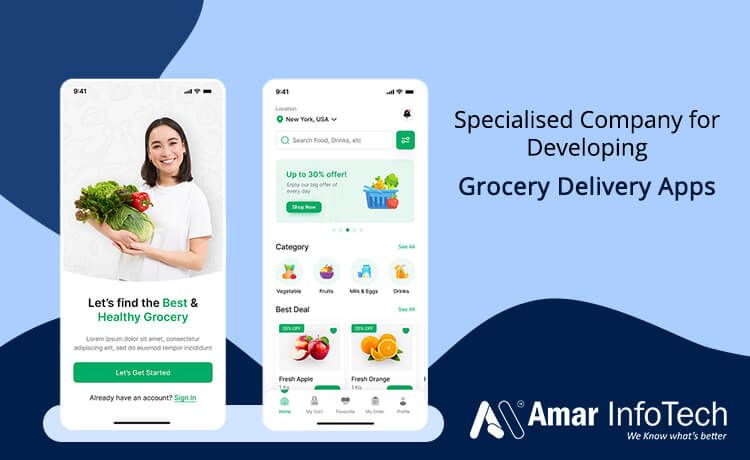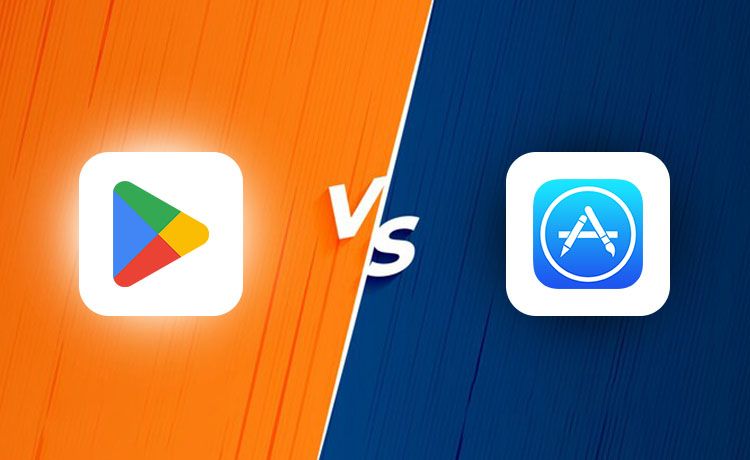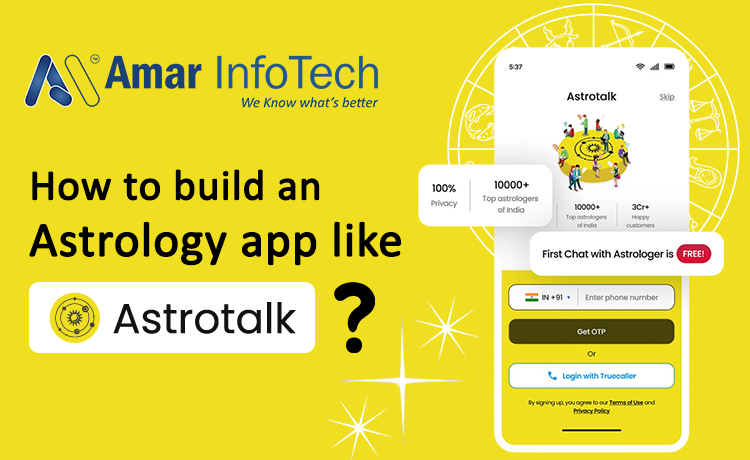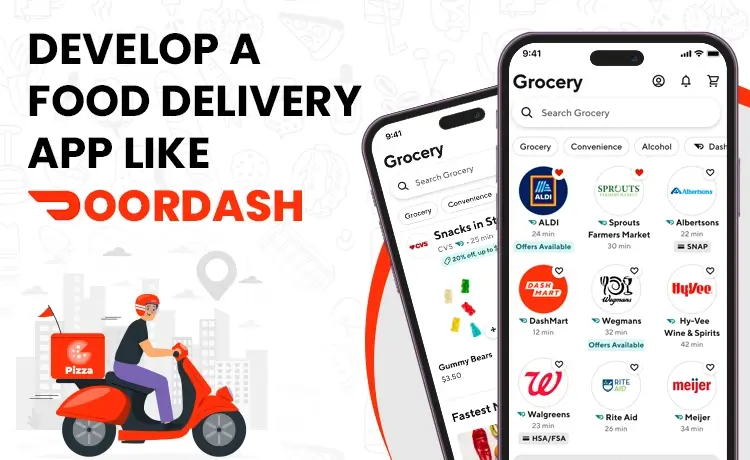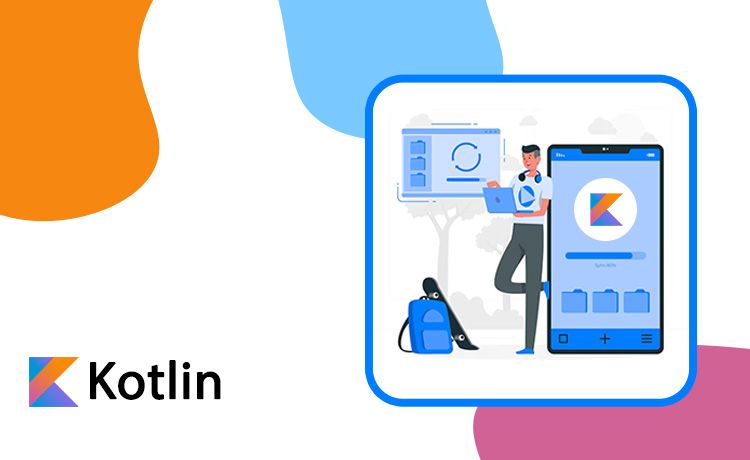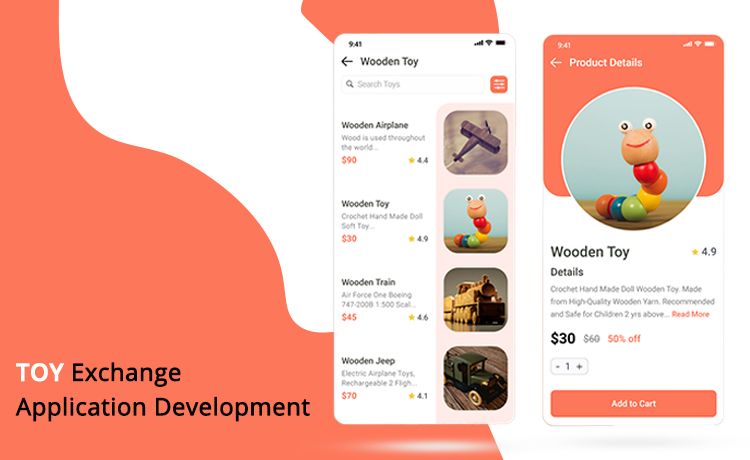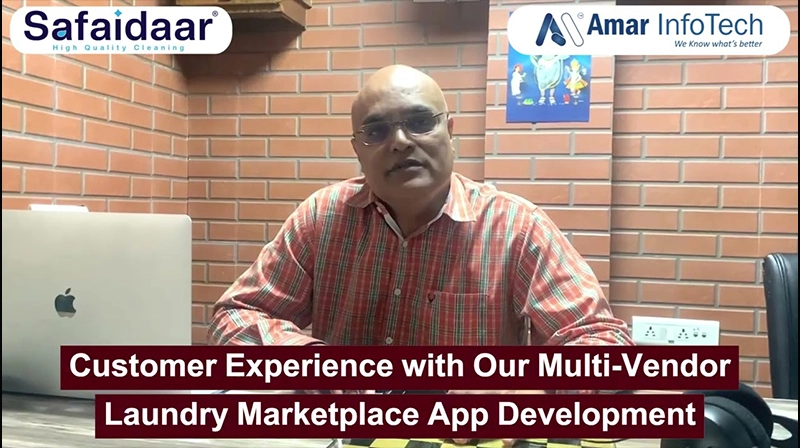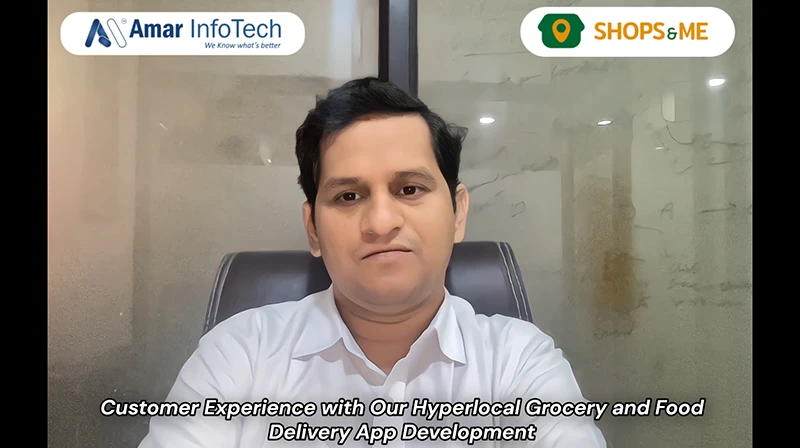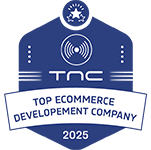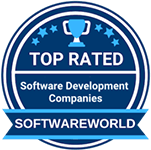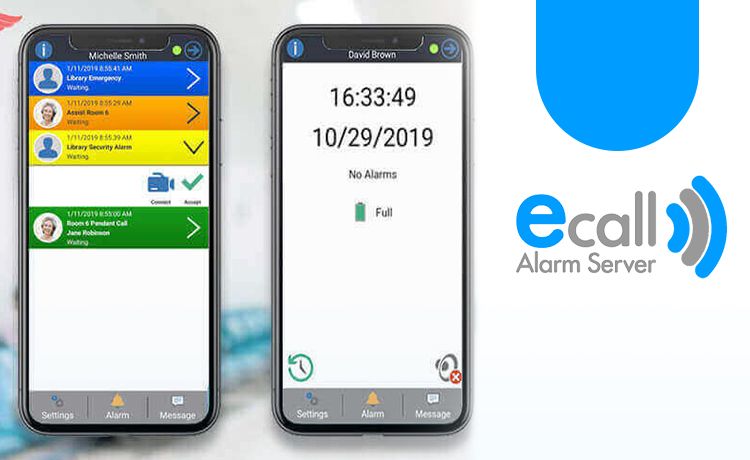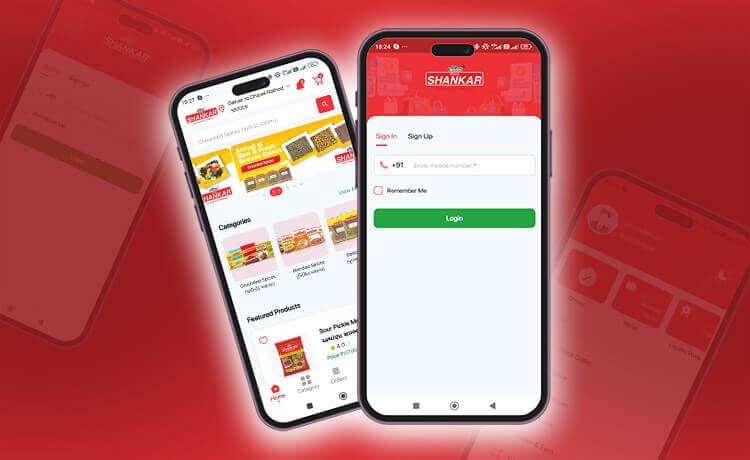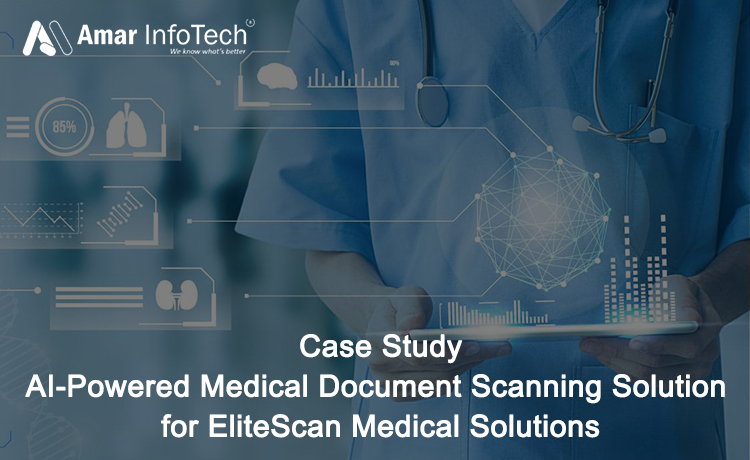Amar Infotech is a trusted grocery app development company offering fully customized grocery delivery app solutions for startups, retailers, and enterprises. Whether you're planning a single-vendor grocery app or looking for multi-vendor grocery app development, our team delivers scalable, feature-rich, and user-friendly mobile apps for Android, iOS, and web platforms.
With more people seeking convenient, time-saving options, the grocery delivery app market is expected to keep growing. Developing a grocery delivery app with features like real-time tracking, personalized recommendations, and payment gateway integration can set businesses apart in a competitive market.
As a result, many businesses are now looking to develop their own grocery delivery app to tap into this market. If you are one of these businesses, you might be wondering where to start. One option is to work with a top grocery delivery app development company in USA like Amar Infotech.

As online shopping continues to grow, developing a grocery delivery app is crucial for meeting consumer demands for convenience. This blog highlights key considerations for building an effective grocery app, including the development process, essential features for users and vendors, and the benefits of our services. We’ll also address costs and provide insights to guide your project from start to finish.
- 1) Grocery Delivery App Development Process
- 2) Hyperlocal Grocery Delivery App Development
- 3) Types Of Grocery App Solutions
- 4) Features required for a Hyperlocal App
- 5) Hyperlocal Grocery User App Features
- 6) Hyperlocal Grocery Vendor App Features
- 7) Hyperlocal Grocery Delivery Boy App Features
- 8) Hyperlocal Grocery Super Admin Panel Features
- 9) Key Benefits of Our Grocery Shopping App Development
- 10) How does Amar InfoTech build App
- 11) Cost for Online Grocery Store App Development?
- 12) Conclusion
Amar Infotech is a leading grocery delivery app development company that has helped businesses of all sizes develop custom on-demand grocery delivery apps. Our team of experienced developers and designers will work with you to understand your unique needs and create a tailor-made solution that meets all of your requirements.
Grocery Delivery App Development Process
Our process begins with a consultation to understand your business goals and objectives. We then work with you to design a user-friendly app that is easy to navigate and provides a seamless shopping experience for your customers. Our developers use the latest technologies and tools to build a scalable and reliable app that can handle a large volume of orders and deliveries.
In addition to development, we also offer ongoing support and maintenance to ensure your app is always up and running smoothly. We can also help you with marketing and promotion to ensure your app is a success.
If you are interested in developing a grocery delivery app for your business, consider working with Amar Infotech. We have the expertise and experience to help you launch a successful app that meets the needs of your customers. Contact us today to learn more about our grocery delivery app development services.
Hyperlocal Grocery Delivery App Development
The rise of technology has greatly impacted the way people shop for groceries. More and more people are opting for the convenience of ordering their groceries online and having them delivered straight to their doorstep. This shift has led to a surge in popularity for on-demand grocery shopping apps, with installs and usage continuing to increase.
As a result, many businesses are looking to tap into this growing market by either bringing their existing grocery stores online or creating a marketplace that connects customers with local stores through a hyperlocal grocery delivery app. Both options have the potential to bring in high returns.
At Amar Infotech, we specialize in helping businesses develop their own successful grocery delivery app. Our team of experienced developers and designers will work closely with you to create a user-friendly and efficient app that meets the needs of your customers. Our ready-made solutions can be customized to fit the specific needs of your business, allowing you to quickly launch your own hyperlocal grocery delivery service.
Some of the key features of our hyperlocal grocery delivery app include:
- Easy search and filter options for customers to find the products they need
- A secure and seamless checkout process
- Integration with popular payment methods
- Real-time tracking of orders
- Personalized recommendations based on previous purchases
In addition to the features listed above, we also offer support throughout the development process to ensure a smooth and successful launch of your hyperlocal grocery delivery service. Contact us to learn more about our grocery delivery app development services and how we can help your business enter the thriving market of online grocery shopping and delivery.
Types Of Grocery App Solutions
There are several types of grocery app solutions that businesses can choose from when developing their own app. Some of the most common options include:
- Single store apps: These apps are designed for businesses that operate a single grocery store. Customers can browse and purchase products online, and either pick up their order in-store or have it delivered to their home.
- Marketplace apps: These apps function as a platform for connecting customers with multiple grocery stores in their area Customers can browse and purchase products from multiple stores, and either pick up their order or have it delivered to their home.
- Multi-Vendor Grocery Marketplace Apps: This is the most in-demand solution for entrepreneurs building a multi-vendor grocery delivery platform — similar to Instacart or BigBasket. Admin can manage all vendors, orders, commissions, and logistics from a powerful dashboard.grocery app development company, multi-vendor grocery app development, custom grocery app, grocery delivery app, single store grocery app, grocery marketplace app, subscription-based grocery app, grocery deal app, meal kit delivery app, grocery delivery platform.
- Subscription-based apps: These apps allow customers to sign up for a subscription service and receive regular delivery of a predetermined set of groceries.
- Coupon and deal apps: These apps offer discounts and special deals on groceries to users who download and use the app.
- Meal kit delivery apps: These apps offer pre-packaged meal kits with all the ingredients needed to prepare a specific meal. Customers can choose from a selection of recipes and have the ingredients delivered to their home.
Which type of grocery app solution is best for your business will depend on your specific goals and target market.
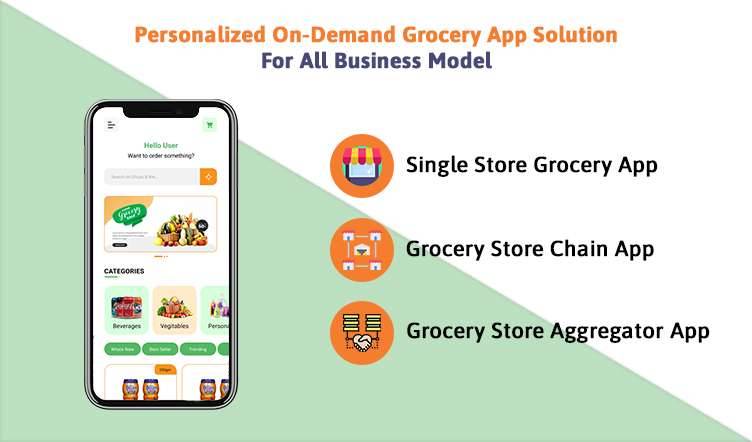
Features required for a Hyperlocal App
Here are some core features that are typically included in an on-demand hyperlocal delivery app:
- User registration and login: Customers should be able to create an account and log in to the app to access their personal information and order history.
- Product catalog: Customers should be able to browse and search for products, view product details, and add items to their cart.
- Shopping cart: Customers should be able to view and modify the items in their cart, as well as apply any discounts or coupons.
- Order placement and payment: Customers should be able to place their order and select their delivery or pickup options, as well as enter their payment information.
- Order tracking: Customers should be able to track their order in real-time, including the location of the delivery driver.
- Push notifications: The app should send push notifications to customers to update them on the status of their order, as well as to alert them of any promotions or discounts.
- Customer support: The app should provide a way for customers to contact customer support in case they have any issues or questions.
- Admin panel: The app should include an admin panel for the business to manage orders, track deliveries, and view analytics.
- Ratings and reviews: Customers should be able to rate and review products and services, and view the ratings and reviews of other customers.
Hyperlocal Grocery User App Features
- Store directory: This feature would allow users to browse and search for stores in their local area that are available for delivery through the app.
- Product search and filtering: Users should be able to search for specific products or filter their search results by various criteria (e.g. price, brand, dietary restrictions).
- Personalized recommendations: The app could use machine learning algorithms to recommend products to users based on their past purchases and browsing history.
- Order tracking: Users should be able to view the status of their current and past orders, including the estimated delivery time and any updates on the delivery process.
- Order customization: Users should be able to specify any special instructions or requests for their order (e.g. substitutions, no plastic bags).
- Multiple payment options: The app should support a range of payment methods, including credit/debit cards, mobile payments, and gift cards.
- Ratings and reviews: Users should be able to rate and review products, stores, and their overall shopping experience to help other users make informed decisions.
Hyperlocal Grocery Vendor App Features
- Order management: This feature would allow vendors to view and manage incoming orders from customers, including the ability to mark orders as fulfilled or cancel them if necessary.
- Inventory management: Vendors should be able to track their inventory levels and receive alerts when items need to be restocked.
- Product listings: Vendors should be able to add and edit the products they offer for sale, including the ability to upload product images and descriptions.
- Order history: Vendors should be able to view a history of all orders placed through the app, including details on the products purchased and the customer's delivery location.
- Customer communication: Vendors should be able to communicate with customers through the app, including the ability to send updates on order status or respond to customer inquiries.
- Sales and performance analytics: The app should provide vendors with insights on their sales and performance, including data on their top-selling products and customer demographics.
- Payment processing: The app should handle all payment processing for vendors, including the ability to track earnings and issue payment settlements.
Hyperlocal Grocery Delivery Boy App Features
- Delivery management: This feature would allow delivery boys to view and manage their current and upcoming delivery assignments, including the ability to mark deliveries as complete or cancel them if necessary.
- Navigation and route optimization: The app should provide delivery boys with turn-by-turn navigation to their delivery locations and optimize their routes to minimize travel time.
- Communication with customers: Delivery boys should be able to communicate with customers through the app, including the ability to send updates on the delivery process or respond to customer inquiries.
- Delivery tracking: Customers should be able to track the real-time location of their delivery through the app and receive notifications when their delivery is on its way or has been completed.
- Payment processing: The app should handle all payment processing for delivery boys, including the ability to track earnings and issue payment settlements.
- Earnings and performance tracking: Delivery boys should be able to view their earnings and performance data through the app, including data on the number of deliveries completed and the distance traveled.
- Availability status: Delivery boys should be able to toggle their availability status on and off in the app to indicate when they are able to accept new delivery assignments.
Hyperlocal Grocery Super Admin Panel Features
- User and vendor management: This feature would allow the admin to view and manage the accounts of users and vendors on the platform, including the ability to deactivate or delete accounts as needed.
- Order management: The admin should be able to view and manage all orders placed through the platform, including the ability to cancel orders or update their status.
- Payment and earnings tracking: The admin should be able to view and manage payment processing for both users and vendors, including the ability to issue payment settlements and track earnings.
- Customer and vendor support: The admin should be able to view and respond to customer and vendor inquiries and support requests through the platform.
- Analytics and reporting: The admin should have access to a range of analytics and reporting tools to track the performance of the platform, including data on sales, user engagement, and delivery efficiency.
- Product and store management: The admin should be able to add, edit, and delete products and stores from the platform, as well as review and approve new additions.
- Promotional tools: The admin should be able to create and manage promotional campaigns for the platform, including the ability to offer discounts and special offers to users and vendors.
- Inventory management: This feature would allow vendors to track their inventory levels and receive alerts when items need to be restocked.
- Delivery management: This feature would allow the admin to view and manage the delivery assignments of delivery boys, including the ability to cancel or reassign deliveries as needed.
- User ratings and reviews: The admin should be able to view and manage user ratings and reviews of products, stores, and their overall shopping experience.
- Communication tools: The admin should have access to tools for communicating with users and vendors, including the ability to send updates or announcements.
- Marketing and advertising tools: The admin should have access to tools for promoting the platform and attracting new users, including the ability to create and manage ads.
- Order customization: The admin should be able to view and manage special requests or instructions from users for their orders (e.g. substitutions, no plastic bags).
- Order tracking: The admin should be able to track the status of all orders placed through the platform, including the estimated delivery time and any updates on the delivery process.
- Multiple payment options: The admin should be able to manage the payment methods accepted on the platform, including credit/debit cards, mobile payments, and gift cards.
Key Benefits of Our Grocery Shopping App Development
- Convenience: A grocery shopping app allows users to shop for groceries from their phone or tablet without having to physically visit a store. This can save time and effort, especially for users who are busy or have mobility issues.
- Personalization: A grocery shopping app can offer personalized recommendations to users based on their past purchases and browsing history, making it easier for users to discover new products they might be interested in.
- Improved customer experience: A well-designed grocery shopping app can make the shopping experience more enjoyable for users by providing features such as easy product search, order tracking, and ratings and reviews.
- Increased sales: A grocery shopping app can help retailers increase sales by making it easier for customers to discover and purchase their products.
- Improved efficiency: A grocery shopping app can help retailers streamline their operations by automating tasks such as order tracking and inventory management.
- Enhanced market reach: A grocery shopping app can help retailers reach new customers by making their products available for delivery to a wider area.
How does Amar InfoTech build App
- Understanding Needs : Once clients get on board, we get to know their business model and requirements. It helps us in coming up with an app that matches their expectations.
- Development Strategy : We research, brainstorm, and come up with a strategy that fits client needs and market conditions. That way, we can develop an app that stays ahead of the curve.
- Front-End Personalization : We customize our ready-made app solution to suit the branding needs of our clients and ensure it has a user-friendly interface, enabling end-users to use it conveniently.
- Back-End Setup : The back-end part of the app is where all processes are handled, and data are stored. Hence, we ensure it is robust and meets all needs.
- Rigorous Testing : Our fully functional application undergoes several stages of testing to ensure it is free from bugs and errors. It helps us in delivering a best-in-class app to our clients.
Cost for Online Grocery Store App Development?
The cost of developing an online grocery store app can vary significantly depending on a number of factors, including the complexity of the app, the number of features included, the development team's hourly rate, and the length of the development process.
In general, the cost of developing a simple online grocery store app with a limited number of features might start at around $10,000 to $50,000, while the cost of a more complex app with a wider range of features could be upwards of $100,000 or more.
It is difficult to give a more specific cost estimate without knowing more about the specific requirements of your app. I recommend speaking with Amar Infotech to get a more accurate quote for your project.
Conclusion
If you are looking for a reliable and experienced grocery delivery app development company, look no further than Amar Infotech. Our expertise and commitment to excellence will help you achieve your business goals and stand out in the competitive world of online grocery delivery.
